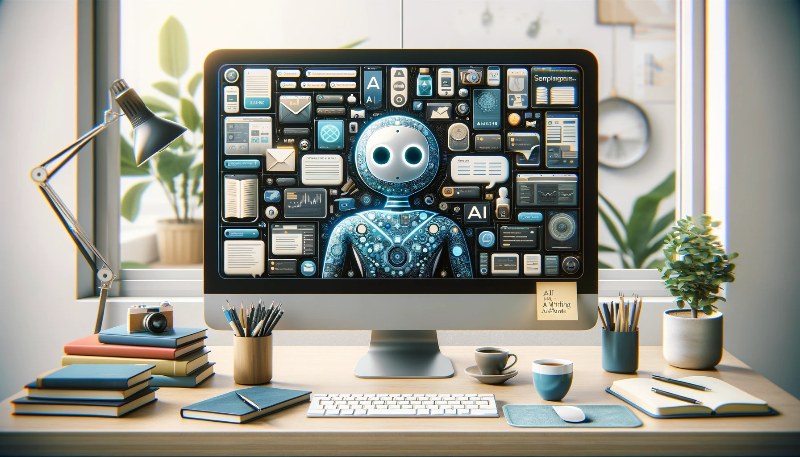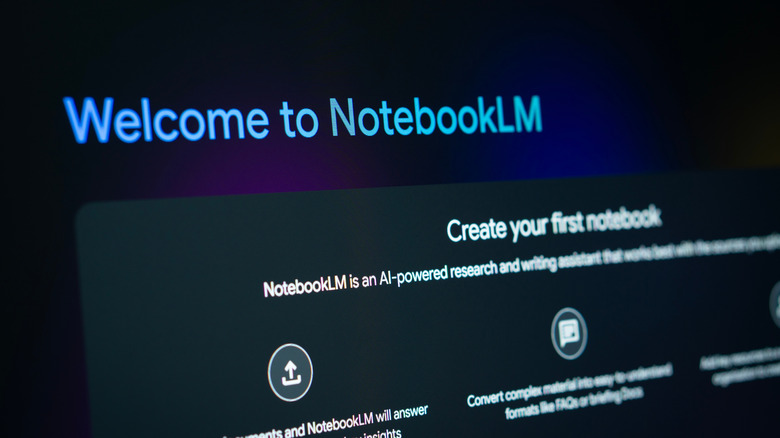
The Prompt Engineering Revolution: How New Tools and Techniques Are Transforming GPT-Powered Content Creation
The Dawn of a New Content Era: Mastering the GPT Co-Pilot
In the rapidly evolving landscape of digital content, the arrival of Generative Pre-trained Transformer (GPT) models has been nothing short of a seismic shift. From solo bloggers to large-scale marketing teams, the ability of models like OpenAI’s GPT-3.5 and GPT-4 to generate human-like text has unlocked unprecedented levels of productivity and creativity. However, the initial novelty of asking a simple question and receiving a coherent answer is quickly maturing into a sophisticated discipline. The latest GPT in Content Creation News isn’t just about the existence of these models, but about how we interact with them. We are moving beyond basic queries into an era of advanced prompt engineering, augmented by a burgeoning ecosystem of specialized tools and platforms. This article explores this transformation, delving into the techniques, workflows, and underlying technologies that are turning generative AI from a curious toy into an indispensable content creation engine. We will examine how mastering the art of the prompt is the new frontier for creators looking to harness the full potential of AI.
Section 1: The Evolution from Simple Queries to Sophisticated Content Engines
The journey of using GPT for content creation has been one of rapid learning and adaptation. What began as a simple, conversational interface has blossomed into a complex field requiring skill, strategy, and the right set of tools to achieve professional-grade results. This evolution reflects a deeper understanding of how these large language models (LLMs) “think” and process information.
From “Write a Blog Post” to Strategic Instruction
Early interactions with platforms like ChatGPT were often characterized by broad, open-ended commands. A user might type, “Write a blog post about digital marketing,” and receive a passable, albeit generic, article. While impressive, this approach rarely yielded content that was unique, brand-aligned, or optimized for specific goals. The latest ChatGPT News highlights a significant shift towards specificity. Experienced creators now understand that the quality of the output is directly proportional to the quality of the input. Instead of a simple request, a modern prompt is a detailed brief. It includes a target audience, a specific tone of voice (e.g., “authoritative yet approachable”), desired keywords, a structural outline, and even negative constraints (e.g., “do not mention our competitors by name”). This granular control is the foundation of prompt engineering.
The Rise of Prompt Engineering and the Tooling Ecosystem
Prompt engineering has emerged as a critical discipline for anyone serious about AI-powered content creation. It’s the art and science of designing inputs to elicit desired outputs from an LLM. This has led to a wave of innovation, as reported in GPT Tools News and GPT Ecosystem News. A new category of software has appeared, designed to act as an intermediary between the user and the AI. These platforms provide structured interfaces, pre-built templates for different content types (social media posts, email newsletters, technical articles), and prompt libraries curated by experts. They essentially build a user-friendly layer on top of powerful but complex systems like the GPT-4 API, democratizing access to advanced prompting techniques. This trend is a core part of recent GPT Applications News, showing a move towards integrated and workflow-oriented AI solutions rather than standalone chatbots.
Section 2: A Deep Dive into the Modern GPT Content Creation Workflow
Achieving excellence with generative AI requires a structured, multi-stage workflow. It’s an iterative process that blends AI’s computational power with human strategy and oversight. This approach ensures the final product is not just algorithmically generated, but strategically sound and creatively polished.

Step 1: AI-Assisted Ideation and Strategy
Before a single word of the final content is written, GPT models can serve as powerful brainstorming partners. Creators can use them to generate blog topic clusters based on a core keyword, develop audience personas, outline a pillar-and-cluster content strategy, or even perform competitive analysis by summarizing top-ranking articles on a given topic. This strategic front-loading ensures that the content created is purposeful and aligned with broader marketing or communication goals.
Practical Example: Generating a Content Cluster
A weak prompt would be: “Give me blog ideas for a SaaS company.”
A strong, strategic prompt would be: “Act as a Content Strategist for a B2B SaaS company that sells a project management tool for remote teams. Our target audience is non-technical project managers in mid-sized companies. Generate a content cluster model based on the pillar topic ‘Effective Remote Project Management.’ Provide 5-7 supporting blog post titles that address specific pain points of our audience, such as communication breakdowns, deadline tracking, and team accountability. For each title, suggest 2-3 relevant long-tail keywords.”
Step 2: Advanced Prompt Formulation and Iteration
This is the core of the creation process. A well-formulated prompt acts as a comprehensive creative brief for the AI. Best practices include:
- Role-Playing: Assigning a persona to the AI (e.g., “Act as a senior financial analyst…”).
- Contextual Priming: Providing background information, data, or brand guidelines.
- Few-Shot Learning: Including 2-3 examples of the desired output style and format.
- Structured Output: Requesting the output in a specific format like Markdown, JSON, or with specific HTML tags to minimize reformatting.
The latest GPT-4 News confirms its superior ability to understand and execute these complex, multi-part instructions compared to its predecessors like GPT-3.5. Iteration is key; creators often refine a prompt multiple times, tweaking phrasing and adding constraints to hone the output.
Step 3: The Human-in-the-Loop: Editing, Fact-Checking, and Refinement
No AI-generated content should be published without rigorous human review. This is a critical point often discussed in GPT Ethics News and GPT Safety News. The human-in-the-loop (HITL) process involves:
- Fact-Checking: LLMs can “hallucinate” or generate plausible-sounding but incorrect information. All data, statistics, and claims must be verified.
- Style and Tone Editing: Ensuring the content aligns perfectly with the brand’s voice and style guide.
- Adding Original Insight: Injecting unique perspectives, personal anecdotes, or proprietary data to elevate the content beyond what an AI can produce. This is crucial for SEO and establishing thought leadership.
- Bias and Fairness Review: As highlighted in GPT Bias & Fairness News, models can reflect biases present in their training data. Editors must be vigilant in identifying and correcting biased or non-inclusive language.
Section 3: Technical Insights and Future-Forward Implications

Understanding the technology that underpins these content creation tools provides valuable context for both users and developers. The progress in this field is relentless, with advancements in APIs, model architecture, and training techniques constantly pushing the boundaries of what’s possible.
The Power of APIs and the Rise of Custom Solutions
The majority of specialized content creation tools are built upon OpenAI’s powerful APIs. The GPT APIs News frequently covers updates to these endpoints, which allow developers to integrate models like GPT-4 directly into their applications. This has created a vibrant market for GPT Integrations News, with AI features being embedded into everything from CRMs to graphic design software. For businesses with specific needs, GPT Custom Models News is particularly relevant. Through techniques discussed in GPT Fine-Tuning News, companies can train a base model on their own data—such as past marketing copy, support tickets, or technical documentation—to create a version that is highly specialized in their domain and consistently reflects their brand voice.
Architectural Advancements and the Road to GPT-5
The engine driving these capabilities is the model’s architecture. Ongoing GPT Architecture News and GPT Research News point towards increasingly efficient and powerful designs. While concrete details are scarce, speculation around GPT-5 News suggests significant improvements in reasoning, reduced hallucination rates, and potentially native multimodality. The concept of GPT Multimodal News is already a reality with GPT-4’s vision capabilities, allowing models to analyze images and charts. The future of content creation will involve prompts that combine text, images, and data, leading to richer and more dynamic outputs. This also ties into GPT Vision News, where AI can describe an image for alt-text or generate a blog post inspired by a photograph.
The Emergence of GPT Agents and Autonomous Workflows
Looking ahead, the most exciting developments are in the realm of GPT Agents News. An AI agent is a system that can take a high-level goal, break it down into sub-tasks, execute those tasks, and learn from the results. In content creation, an agent could be tasked with: “Write a comprehensive, SEO-optimized guide to ‘GPT in Finance News’.” The agent would then autonomously perform keyword research, browse top-ranking articles for structure and key points, write a draft, find or generate relevant images, and present a complete package for human review. This represents a paradigm shift from a co-pilot, which executes commands, to a proactive collaborator that manages entire workflows.

Section 4: Recommendations, Best Practices, and Considerations
To effectively leverage GPT in content creation, a strategic approach is essential. It requires balancing the immense potential with a clear-eyed understanding of the limitations and risks involved.
Pros and Recommendations for Adoption
- Speed and Scale: Dramatically accelerate content production, from first draft to final polish. Recommended for teams needing to scale their output without a linear increase in headcount.
- Overcoming Writer’s Block: Use GPT as an ideation and outlining tool to break through creative hurdles.
- Content Repurposing: Effortlessly transform a long-form article into a Twitter thread, a LinkedIn post, and a video script.
- Personalization at Scale: Generate personalized email campaigns or marketing copy based on user data, a key topic in GPT in Marketing News.
Cons and Pitfalls to Avoid
- Factual Inaccuracy: Never trust AI-generated data or facts without verification. This is a primary concern in fields like GPT in Healthcare News and GPT in Legal Tech News where accuracy is paramount.
- Generic Output and Plagiarism: Without skilled prompting, content can be generic. There’s also a risk of producing text that is too similar to existing content, raising plagiarism concerns.
- Loss of Brand Voice: Over-reliance can dilute a unique brand voice. Fine-tuning or providing detailed style guides in prompts is crucial.
- Privacy and Regulation: Be cautious about inputting sensitive or proprietary information. The evolving landscape of GPT Regulation News and GPT Privacy News means compliance is a moving target.
Conclusion: The Future is a Human-AI Symbiosis
The integration of GPT models into content creation is far more than a passing trend; it is a fundamental evolution of the creative process. The latest GPT Trends News shows a clear trajectory away from simple, one-off commands towards a sophisticated, tool-assisted, and workflow-driven collaboration between human and machine. The true power of this technology is unlocked not by replacing human creativity, but by augmenting it. By mastering the art of the prompt, leveraging the growing ecosystem of specialized tools, and maintaining rigorous standards of editing and ethical oversight, content creators can achieve unprecedented levels of quality, speed, and strategic impact. The future of content isn’t about choosing between human or AI; it’s about building a symbiotic partnership where strategic human insight guides the immense generative power of artificial intelligence.



